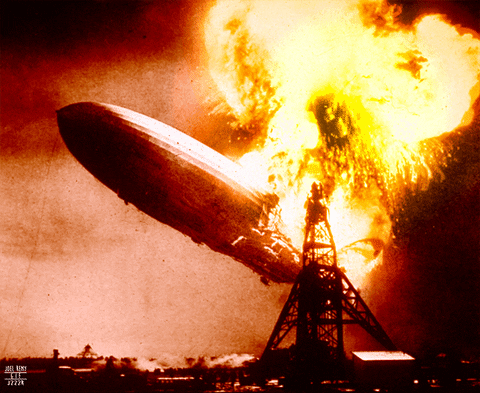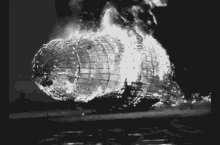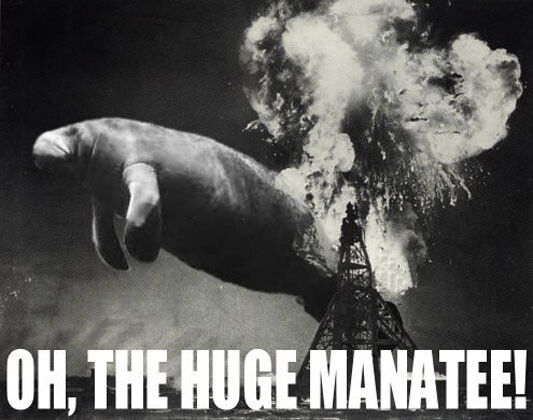



Cars around here with dazzle wrap all have manufacturer’s license plates. It’s meant to keep the public and competitors from figuring out the make and model. Doesn’t work for disguising some cars. (The GM and Chrysler proving grounds are not far away and Car & Driver’s office is in town. I see cars like this at least weekly.)

For all its dangers, it’s pretty remarkable how few deaths or major injuries there are in F1 these days. Back then, drivers (and spectators) dying in horrific fashion was the norm. These days it’s big news.
I remember how drivers and fans crapped all over the halo because it was “ugly” until it saved Lewis Hamilton’s life when Max Verstappen attempted this unconventional overtake:
(This incident literally left tire marks on Hamilton’s helmet.)
Or when Zhou Guanyu was fine after experiencing what it must like to be in a washing machine during its spin circle thanks again to the halo:

There’s a fascinating documentary from the 1970s about F1 drivers:
It’s this weird juxtaposition of low budget 1970s porn movie production and boppy music juxtaposed with graphic footage of drivers dying in terrible crashes and giant fireballs, fascinating behind the scenes footage, vintage race footage, and some 10 minutes of Jackie Stewart casually driving the Nurburgring in his Bentley explaining the track to the viewer. (The whole film can be really hard to watch, but this segment in particular is just lovely and starts at around 19:45) In some ways it’s like a weird proto version of Netflix’s Drive to Survive series.
One of the weirder perks of my job is that I got watch an excavator pick apart a (modern) Rolls-Royce at BMW Group’s facility for that kind of thing. I had seriously underestimated how rustic those are under their skin.
At ~7:30, seeing that beast get tossed into Carousel even at a tepid 35MPH was about as clenchingly terrifying as I would expect.
Since we’re talking about ridiclous vehicles doing laps on the Nurburgring, I would be remiss if I didn’t post this Top Gear classic:
(Still can’t believe she’s gone…)
I highly recommend the documentary Senna (2010) out on blu- ray, whether one is into F1, Indy, Le Mans, or whatever. It very candidly illustrates the cutthroat drama on and off the race course. 1980s Formula 1 racing at its best and worst. Intentional crashes. Enmity, Revenge, and Tragedy. Ayrton Senna. One of the greatest F1 drivers, and perhaps the best in wet conditions.
Technology has created Flying Dutchmans.
The Senna documentary is really good. There was a recent Brazilian-made Senna docuseries that dropped on Netflix as well. It had plenty of whitewashing (if not downright hagiography), but the early career stuff was interesting and racing scenes were pretty well done. It also definitely portrayed his volatile and asshole side.
All that aside, there’s no disputing that he was a legendary driver who died tragically. The irony being that right before he died, he had been encouraged by former rival-turned-friend Alain Prost to rally other drivers to force the FIA to improve safety standards. After his death, there were no more fatalities in F1 for 20 years - not coincidentally that death coincided with lax safety standards because “things have been fine”. ![]()
As an aside, Max Verstappen reminds me a lot of Senna with his massive talent and massive “fuck you” attitude on the track.
In the 2010 documentary it was briefly mentioned that the FIA’s Dr. Sid Watkins (friend to Senna) put himself to pursuing greater safety after Senna’s death. Did the docuseries cover that important “epilogue”?
Not so much from what I recall. Too much hero worship to fit that in I guess, but it’s been a while since I saw it.
Judging by the hood ornament, is that not another Rolls Royce?
Well, soon-ish. At best. Scaling up a single-seater x-plane and turning it into an airworthy airliner that is certified to carry up to 80 passengers won’t happen at supersonic speeds.
It will be expensive to develop,1) expensive to build,2) expensive to fly,3) expensive to maintain4) and can only service a niche market.5)
A lot of the factors that Concorde6) had to cope with are still in play here as well.7)
Interesting article with a brief look into the history of supersonic passenger planes and the politics involved.8)
1) Everything needs to be designed for a hot plane. That’s quite an engineering challenge in its own right and means components and, to some extent, materials no other type uses. Lots of bespoke solutions that do not exist yet.
2) Again with the exotic bits and materials. Plus it won’t have the economies of scale that come from building a sizable number of it plus building a sizable number of other models that use the same components. There is bound to be a lot involved that simply can’t be sourced off the shelf.
ETA:
Regarding 1) and 2), so far they have raked in some $600 million. Given what quite a lot of analysts in the industry guesstimate they’ll need 10 to 20 times as much to make it happen.
3) Infrastructure for ground maintenance. The stress on the airframe and the engines will be considerably greater than it is on your average subsonic widebody. This means shorter intervals between checks. Anything beyond a superficial inspection needs trained personnel and specialist tools and whatnot. This will need infrastructure that can’t be used for a lot of other planes. The really big strip-out-everything checks will mean to take them back to the factory.
A plane that’s being inspected doesn’t earn money. If regular routes/schedules are to be operated and maintained, the operators need a certain amount of “extra” planes. This needs to be carefully judged. Not enough and they can’t keep up the schedules. Too many and they’re burning money. (Although “too many” may be useful at a later point to source spare parts.)
It’s a function of flight time, down time and number of passengers transported. The larger the fleet gets, the smaller the percentage of units that don’t earn money at any given time gets.
This isn’t new. When crossing the Atlantic meant ocean liners, the companies running them on a regular schedule needed at least three more or less identical shipsa) to hit the economical sweet spot during the age of coal and at least two ships after the switch to oil. (Building new ships and upgrading their technology was occasionally interrupted by the odd world war or economic crisis which messed things up, but the principle stands.)
Today’s airlines operate sizable fleets of the same type of plane that can easily replace each other at short notice and can be serviced the world all over in manufacturer’s satellite plants or by subsidiaries. That’s quite the infrastructure to build up and maintain, but there are enough planes to go around to keep it really busy. Which keeps the costs down.
4) First of all everything mentioned under 3), plus over time availability of spare parts and qualified personnel will be a growing problem.
And last but not least: more stress on the airframe from supersonic means a shorter airframe life compared to subsonic.
5) It’s fast, but small. Boom says the Overture will seat up to 80 passengers. Ticket prices won’t be exactly cheap. Definitely not the “4 hours to any place in the World, for $100” bargain Boom’s CEO was pitching in 2021 or so. In case you wonder, he’s still the CEO. By now the press kit says “fares comparable to business class”. Which isn’t the same as “cheaper than business class”.
I just don’t see the market for it. There are people who can afford it, but the overlap with those who prefer a private jet or the ‘flying hotel’ level of sheer room and amenities a widebody can offer is considerable. This is not for your average tourist. Which would also undermine the only possible business case. Rich people will shell out a lot of money for a lot of crap, but the trick is to keep whatever you’re selling exclusive. It’s a class thing.b)
So, as mentioned, no economies of scale for operating costs.
Per Jimbopedia, Boom Technology aims to introduce the Overture in 2029. The company projects a market for up to 1,000 supersonic airliners, serving 500 viable routes […]
Yeah, right, of course they will. Boeing built a total of 856 (all variants) 707s between 1956 and 1978, and 154 of the 720.
Okay, Boeing also has built a little over 12,000 (all variants) 737s since 1967. Airbus has built as many planes from the A320 family since 1988. But that’s widebody workhorses that can haul almost everything almost everywhere at competitive cost, especially people. And that’s why there are so many, many of them.
6) Such a beautiful, beautiful, unforgettable plane. BTW, faster than the Boom Overture. Faster than most jet fighters today, and for hours on end, not just for a short sprint.
7) They knew that airframe life would be roughly 1/3 that of a subsonic jet airliner. They also knew that it would burn a lot of fuel.
But at the time, the math worked out. In the late 1950ies/early 1960ies, passenger jets were narrow-body. Concorde would have seated roughly as many passengers as the first 707.
But because it would be so much faster, it would be able to make three or four flights in the same amount of time, and fuel was cheap. The bottom line looked good back then.
But then development turned out to be a bit more complicatedc) than anticipatedd) and took longer. A lot longer. By the time it was ready for market, widebodies were hauling a lot more passengers in one flight, and then the first oil crisis came along and fuel was more expensive. A lot more expensive.
And at that point, the US had dropped out of the racee) and the Tupolev had shown conclusively that it was no viable alternative.
So the Concorde was left, but the only airlines that bought some were the British and French national flag carriers who had no choice. Their heads of state got a flashy plane to show off to other heads of state in the bargain, so that was nice.
8) Per the article, Boom CEO Blake Schollf) stated
“The ban on supersonic has held back progress for more than half a century. I urge Congress to pass the Supersonic Aviation Modernization Act supersonically, so we can all enjoy faster flights and maintain American leadership in aviation.”
Well, as we all know, neither American airplane companies, nor American airline companies have absolutely no political clout whatsoever in DC. So sure, that was definitely all that held back super sonic transport all those years.
a) Why do you think White Star Line ordered three Olympic-class ocean liners, just to keep Harland and Wolff busy?
b) Which is why stuff like “captain’s dinner” is so aspirational lower middle class, if you know what I mean. You pay a (for you anyway, yobbo) noticeable amount of money for a cruise - and then eat with the staff, basically domestics, and get all giddy over it? Pathetic.
c) I think maybe they were a tad overly optimistic about how useful data from the Avro Vulcan would be. Delta wing, practically the same engines and all that. But a luxury airliner isn’t the same as a nuclear bomber.
d) There even is a Monty Python sketch about it. The punchline is that because something got lost in translation the British engineers are designing a plane and the French engineers end up designing a ship.
e) Kicked off because JFK went ballistic when he heard that Pan Am’s Juan Trippe had pre-ordered a couple of Concordes. America had to be bigger, better and faster than the commies and those goddamn Europeans, so Uncle Sam would pay 70% of the development costs.
Boeing proposed the 2707 swing wing, Lockheed the L-2000 delta wing.
It seems a bit odd that North American Aviation didn’t give it a try after all the effort they had put into the XB-70 Valkyrie - but then again maybe they didn’t give it a try because of the XB-70. Possibly the most bonkers plane that ever flew.
CORRECTION: NAA did have a SST proposal - but dropped out early for some reason or other.
Not as bonkers as some concepts that never left the drawing board, though.
Lockheed dropped out, Boeing realised they couldn’t make the swing wing work at this size, redesigned, nearly going under with it in the process, and dropped out as well. What saved them was the 747, but that’s another story.
f) As far as I know, no relation.
Your footnotes have footnotes. Coming next, footnotes for the footnotes to the footnotes.
…and the numbers keep getting smoller and smoller